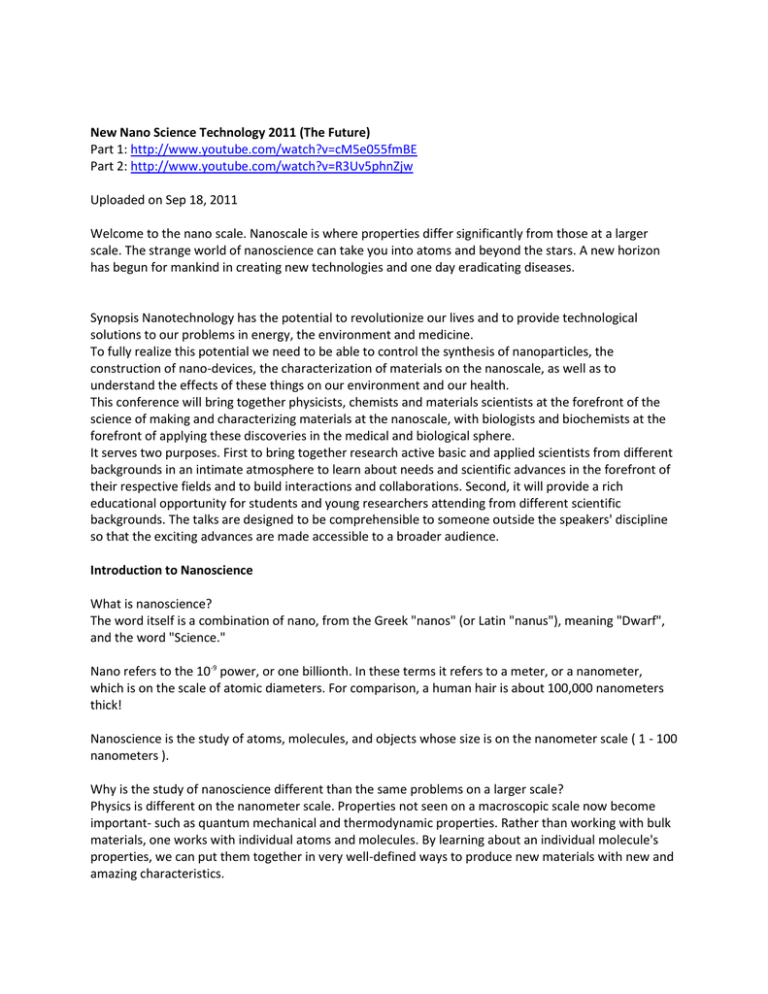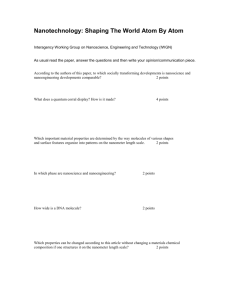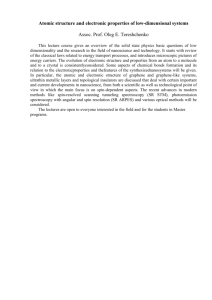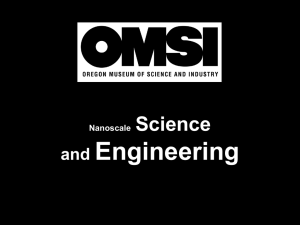Uploaded on Sep 18, 2011
advertisement

New Nano Science Technology 2011 (The Future) Part 1: http://www.youtube.com/watch?v=cM5e055fmBE Part 2: http://www.youtube.com/watch?v=R3Uv5phnZjw Uploaded on Sep 18, 2011 Welcome to the nano scale. Nanoscale is where properties differ significantly from those at a larger scale. The strange world of nanoscience can take you into atoms and beyond the stars. A new horizon has begun for mankind in creating new technologies and one day eradicating diseases. Synopsis Nanotechnology has the potential to revolutionize our lives and to provide technological solutions to our problems in energy, the environment and medicine. To fully realize this potential we need to be able to control the synthesis of nanoparticles, the construction of nano-devices, the characterization of materials on the nanoscale, as well as to understand the effects of these things on our environment and our health. This conference will bring together physicists, chemists and materials scientists at the forefront of the science of making and characterizing materials at the nanoscale, with biologists and biochemists at the forefront of applying these discoveries in the medical and biological sphere. It serves two purposes. First to bring together research active basic and applied scientists from different backgrounds in an intimate atmosphere to learn about needs and scientific advances in the forefront of their respective fields and to build interactions and collaborations. Second, it will provide a rich educational opportunity for students and young researchers attending from different scientific backgrounds. The talks are designed to be comprehensible to someone outside the speakers' discipline so that the exciting advances are made accessible to a broader audience. Introduction to Nanoscience What is nanoscience? The word itself is a combination of nano, from the Greek "nanos" (or Latin "nanus"), meaning "Dwarf", and the word "Science." Nano refers to the 10-9 power, or one billionth. In these terms it refers to a meter, or a nanometer, which is on the scale of atomic diameters. For comparison, a human hair is about 100,000 nanometers thick! Nanoscience is the study of atoms, molecules, and objects whose size is on the nanometer scale ( 1 - 100 nanometers ). Why is the study of nanoscience different than the same problems on a larger scale? Physics is different on the nanometer scale. Properties not seen on a macroscopic scale now become important- such as quantum mechanical and thermodynamic properties. Rather than working with bulk materials, one works with individual atoms and molecules. By learning about an individual molecule's properties, we can put them together in very well-defined ways to produce new materials with new and amazing characteristics. Why is nanoscience suddenly becoming such a big field? There are multiple reasons for this. One is availability of new instruments able to "see" and "touch" at this scale. In the early 1980's the scanning tunneling microscope was invented at IBM-Zurich in Switzerland. This was the first instrument that was able to "see" atoms. A few years later, the Atomic Force Microscope was invented, expanding the capabilities and types of materials that could be investigated. Hence, Scanning Probe Microscopy was born, and since then multiple similar techniques have evolved from these instruments to "see" different properties at the nanometer scale. In addition, "older" techniques such as electron microscopy have continued to evolve as well, and now can image in the nanometer range. Currently, there are a large number of complementary instruments that help scientists in the nano realm. In addition to the enabling technologies, scientists have realized the future potential of this research. By convincing politicians and leaders around the world, countries have instituted initiatives to promote nanoscience and nanotechnology in their universities and labs. With the recent increase in funding, many scientists are pursuing this research and the rate of discovery has increased dramatically.



